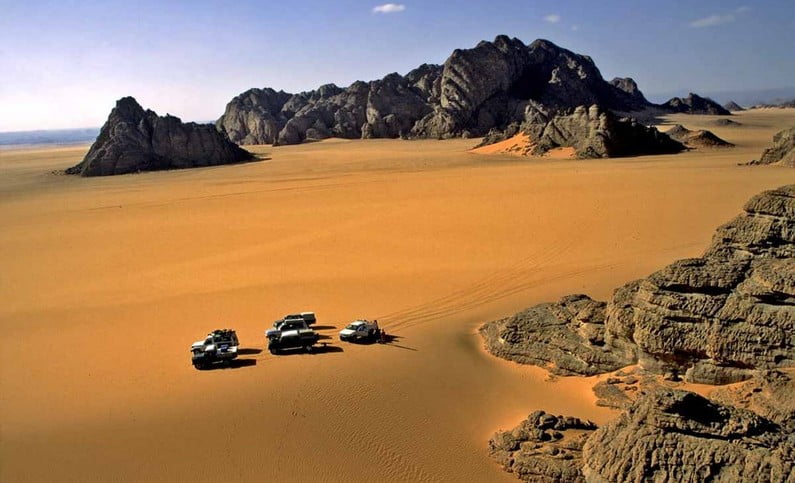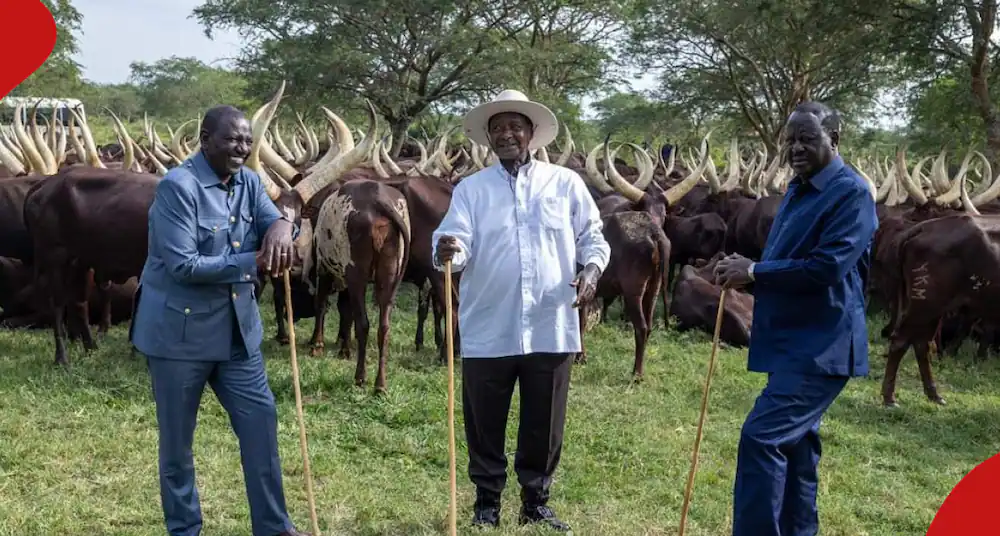Chad is a landlocked country located in Central Africa. It is bordered by Sudan to the east, Libya to the north, Niger and Nigeria to the west, and Cameroon and the Central African Republic to the south. With an estimated population of over 18.5 million people, Chad is one of the largest countries in Africa. Despite being known as one of the poorest countries in the world, Chad is filled with natural beauty and a rich cultural heritage that makes it an interesting and unique travel destination for those seeking an off-the-beaten-path experience. Let us explore this unique country.

Geography and Climate
Chad is characterized by its geographical diversity that spans from the arid Saharan desert in the north to the fertile savannahs in the south. The country’s northern region is home to the Tibesti Mountains, the highest peaks in the Sahara, while the arid plains of the Bodele Depression dominate the center. In contrast, the southern region is characterized by lush landscapes, marked by the vast floodplains of the Chari and Logone rivers, which converge into Lake Chad, one of the largest freshwater lakes in Africa.
The climate of Chad is as varied as its geography, predominantly tropical in nature but with significant regional variations. The Sahara desert in the north experiences extreme temperatures, with scant rainfall and hot winds. The Sahel region in the middle of the country is semi-arid, with sparse but crucial rainfalls that support nomadic herding and limited farming. Further south, the climate is more tropical, with substantial rainfall supporting rich wildlife and agriculture.
History
The history of Chad is a rich tapestry that weaves together multiple eras, cultures, and influences. Archaeological evidence suggests that the region has been inhabited since the prehistoric era, with the discovery of tools and artefacts dating back to the Paleolithic period. Read Also: List of top 7 largest countries in Africa
In the medieval era, several powerful kingdoms and sultanates flourished in the region, including the Kanem-Bornu, Baguirmi, and Ouaddai empires. These kingdoms were renowned for their wealth, strategic trading routes, and the spread of Islam in the region.
The 19th century marked a period of European exploration, culminating in French colonization at the end of the century. The French rule, which lasted until 1960, brought significant changes, including the introduction of modern administrative systems, education, and economic structures.
Chad gained independence from France on August 11, 1960, with François Tombalbaye serving as the country’s first president. The post-independence period, however, has been marked by political instability and civil unrest, with conflicts fueled by ethnic tensions and disputes over resources. Despite these challenges, Chad continues to stride towards stability and development, forging a unique path that draws from both its rich heritage and its contemporary realities.

Culture and Traditions
Chad’s culture and traditions are a captivating tapestry woven from the threads of over 200 ethnic groups that call this country home. Each ethnic group contributes its own distinct customs, languages, and traditions, resulting in a richly diverse cultural landscape. Music and dance play a significant role in Chadian society, with traditional songs often telling stories of the country’s history and folklore. Instruments such as the balafon, a type of wooden xylophone, and the kora, a stringed instrument, are commonly used in performances.
Traditional art in Chad is primarily expressed through pottery, leatherwork, and weaving. Intricately patterned woven baskets and mats are commonly found in local markets. Chad is also renowned for its vibrant oral literature, filled with legends, proverbs, and riddles that have been handed down through generations, keeping the spirit of the past alive. Read Also: Cameroon: A Fascinating Blend of Nature, Culture, and History
Traditional customs and practices also extend to societal structures in Chad, with a strong emphasis on respect for elders and authority figures. However, modern influences are gradually seeping into society, leading to an interesting juxtaposition of traditional customs and contemporary ideals.
Chad is a country that boasts of its cultural diversity, which is made up of various ethnic groups. Some of the major groups include Sara, Arab, Kanembu, and Ouaddai communities. Each of these groups has its unique traditions and customs that make them stand out. The country is renowned for its vibrant festivals, such as the Gerewol festival, which the Wodaabe people celebrate. Traditional music, dance, and storytelling are part and parcel of the country’s daily life, reflecting ancient traditions and ancestral wisdom.

Food and Cuisine
Chadian cuisine is a blend of traditional African staples and Middle Eastern influences, reflecting the diversity of the country’s ethnic communities. The most common ingredient is millet, a versatile grain used in various dishes, from porridge to bread. One popular staple is a porridge-like dish called “Bouille,” typically made from millet or sorghum and served with a variety of sauces.
Meat and fish, often smoked, dried, or salted for preservation, are also integral to Chadian cuisine. Goat, chicken, and beef are common, while in the Lake Chad region, a variety of fresh and dried fish is widely consumed. Vegetables such as okra, spinach, and sweet potatoes are commonly used in soups and stews, accompanied by spices such as garlic, ginger, and saffron.
A traditional Chadian meal is often hearty and flavorful, with a balance of grains, proteins, and vegetables. Communal eating is a common practice, with meals often consumed from a shared bowl, symbolizing unity and fellowship. However, it’s worth noting that food customs can vary significantly between different regions and ethnic groups, reflecting the diverse tapestry of Chadian culture.
Tourism
Tourism in Chad, although not as developed as in other African nations, presents a unique blend of natural beauty, cultural richness, and historic significance. The country’s topography is diverse, featuring the arid Sahara Desert in the north, the lush tropical vegetation in the south, and the stunning Lake Chad, one of the largest freshwater lakes in Africa.
For travelers with a penchant for adventure, Chad offers a myriad of unique experiences. The Zakouma National Park, a UNESCO World Heritage site, provides an unforgettable safari with diverse wildlife, including elephants, lions, and various bird species. The Ennedi Plateau showcases breathtaking rock formations sculpted by wind and water, creating a surreal landscape for adventurers.

History enthusiasts can explore the ancient city of N’Djamena, which preserves remnants of past civilizations at the National Museum. The Tibesti Mountains, known for their dramatic landscapes and ancient rock art, are a paradise for hikers and history buffs. However, Chad’s true charm lies in its cultural richness, customs, and traditions. Bustling marketplaces offer vibrant textiles, intricate jewelry, and local cuisines, showcasing the country’s vibrant cultural heritage.
Economy
Chad’s economy is supported by a range of sectors, encompassing agriculture, oil production, livestock, and mining. The country’s economic landscape is predominantly agrarian, with approximately 80% of the population depending on subsistence farming and livestock rearing for their livelihood. The fertile lands along the Chari and Logone Rivers sustain the cultivation of cotton, millet, sorghum, and peanuts.
Notably, the major cash crop is cotton, which accounts for a significant portion of the country’s exports. However, Chad has been increasingly harnessing its oil reserves, discovered in the late 20th century, which now accounts for a substantial part of its GDP and state revenues. Nonetheless, the economy faces several challenges, including geographical remoteness, lack of infrastructure, and political instability.
Moreover, it is vulnerable to climatic variations and commodity price fluctuations, particularly those of oil and cotton. Efforts are ongoing to diversify the economy and reduce its dependence on oil, with emphasis on sectors such as mining and telecom. Despite these hurdles, Chad has shown resilience and holds significant economic potential with its abundant natural resources and youthful population.



